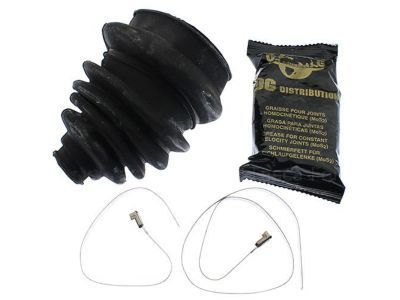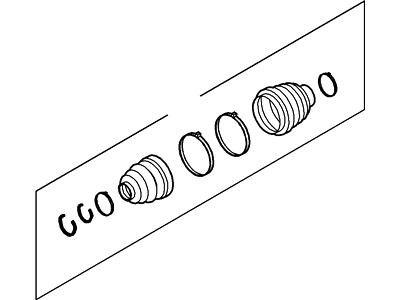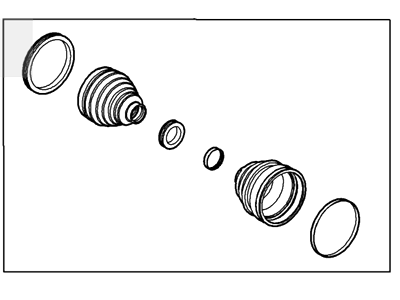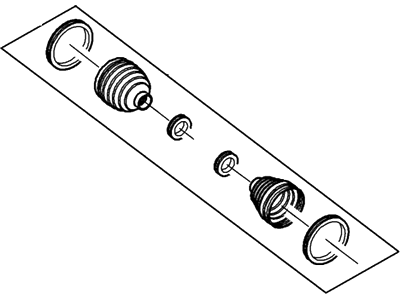

My Garage
My Account
Cart
Genuine Lincoln MKX CV Boot
Axle Boot- Select Vehicle by Model
- Select Vehicle by VIN
Select Vehicle by Model
orMake
Model
Year
Select Vehicle by VIN
For the most accurate results, select vehicle by your VIN (Vehicle Identification Number).
3 CV Boots found
Lincoln MKX Boot
Part Number: 7T4Z-3A331-B$64.68 MSRP: $106.91You Save: $42.23 (40%)Ships in 1-2 Business DaysLincoln MKX Boot
Part Number: 7T4Z-3A331-A$64.68 MSRP: $106.91You Save: $42.23 (40%)Ships in 1-2 Business DaysLincoln MKX Kit - Boot
Part Number: 7T4Z-4L537-A$194.94 MSRP: $285.00You Save: $90.06 (32%)Ships in 1-3 Business Days
Lincoln MKX CV Boot
The CV Boot in Lincoln MKX automobiles is an essential part that protects the constant velocity or CV joint which ensures the efficient transmission of power from the transaxle to the wheels. These boots exist in a variety and have fixed joints at the outer part of the axle and the plunge joints at the inner part. Outboard Rzeppa joints are often used while tripod and double offset joints are found on the inboard part of the drivetrain. The boots are made to incorporate some lubricant for the joint and this is meant to protect the CV joint from harsh weather conditions, thus not causing any early failure. Cracks, tears, and damaged sections have to be inspected often in order to guarantee that the CV boot on Lincoln MKX cars will deliver its premier performance.
We provide a wide range of Lincoln MKX CV Boot at the best prices possible. If you need Lincoln MKX CV Boot, you can shop with confidence on our website. All our OEM parts come with a manufacturer's warranty and are delivered to your door step with a fast delivery service.
Lincoln MKX CV Boot Parts Questions & Experts Answers
- Q: How do you check and maintain the CV boots and Shock Absorber on a Lincoln MKX?A:When carrying out a shock absorber check, ensure that the car is parked on a smooth ground with its engine switched off and parking brakes kept in place while checking tire pressures. Press down at each quarter of the vehicle noting its body movement in anticipation for straightening after one or two rebounds; continuous bouncing back or unequal positions might mean eroded shock absorbers. Even though if considerable leakage is present we should replace them, they can be retained as long as there are no leaks when performing this test on the rest of the corners and examining for shocks' fluid leakage. The upper mounts should also be checked for wear or damage, confirming their firm attachment and subsequently replacing them where necessary. For steering and suspension examination, monitor tyre wear patterns, inflation rates as well as inspect universal joint, dust boots, steering gear housing, boot clamps, tie rod ends and any damage to all components of suspension and steering mechanism plus worn out bolts or rubber bushings. While an assistant turns the steering wheel check for easy movement without causing wear down or sticking during these findings. Move each control arm up and down to assess play in ball joints; remove those with play by replacing worn out ones. Walk around feeling the boot grease along with cracks which may have occurred therein. Behind look at suspension arm bushings for signs of decayed leaves. Still perform a CV Boot Check by washing them before closely examining them for signs of tear off/peelings/cracks and flimsy fasteners particularly concerning outer CV boot due to its regular movement in accordance with steering activity; if more than one crack is visible then it needs replacement because lubricant has leaked through outer CV boot hole.
- Q: How to replace CV joint boots on drive axles on Lincoln MKX?A:First, you will have to remove the axle from the car and secure it in a bench vise. Remove the CV Boot clamps, and retainer clip, and then pull the CV Boot back off of the inner CV joint. Separate the joint housing from the axle and remove the tripod and old inboard CV Boot. The outer boot can be slid off by removing two boot clamps. Inspect components for wear and clean them. Next slide a new boot over the shaft, pack grease into the outboard CV joint, and spread the remaining in the sealing boot. For rear-drive axles on AWD models, proceed similarly as for front-drive models above.






